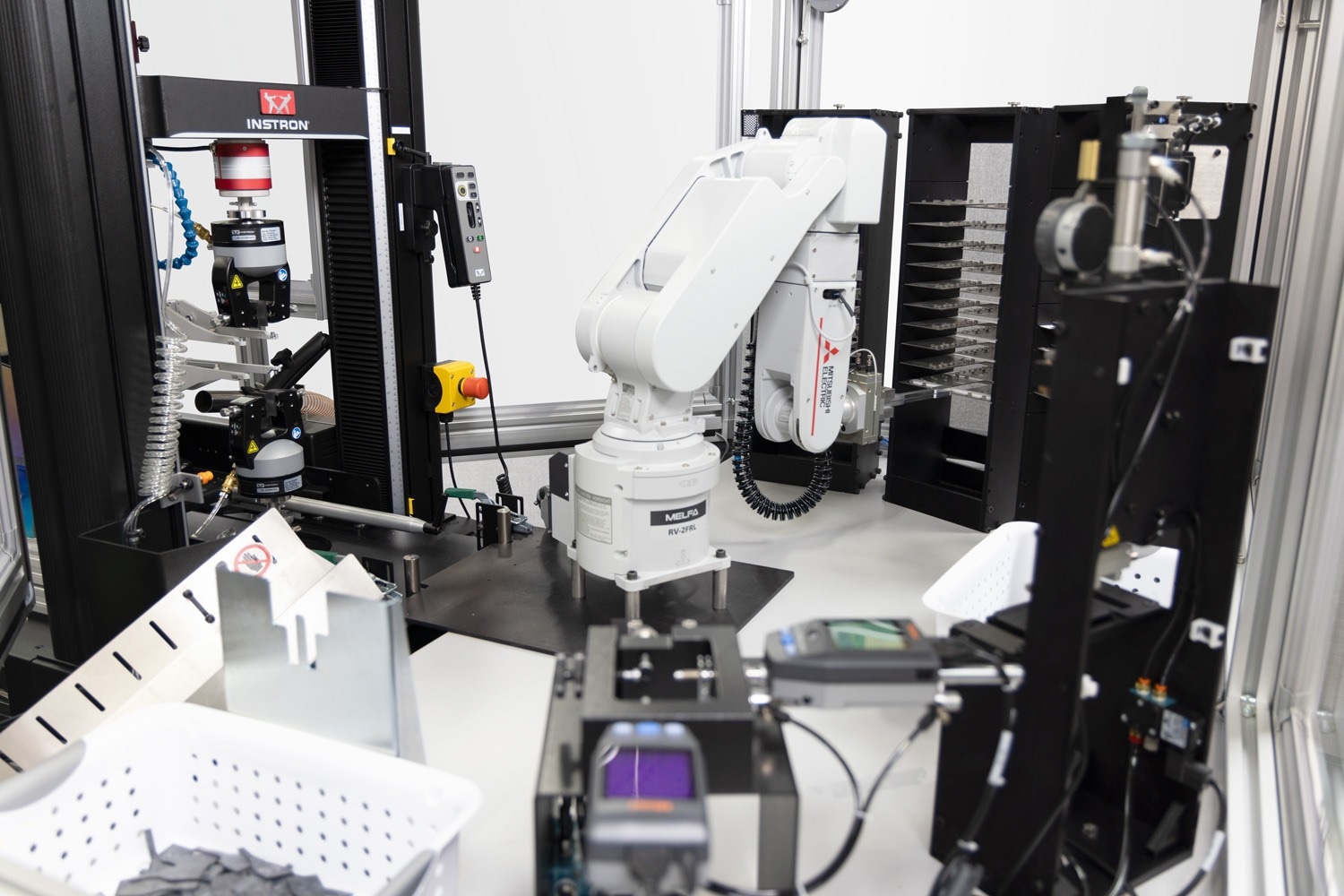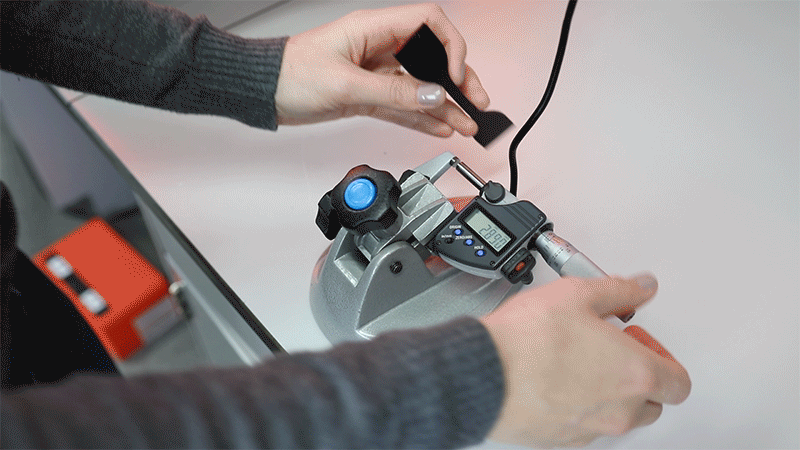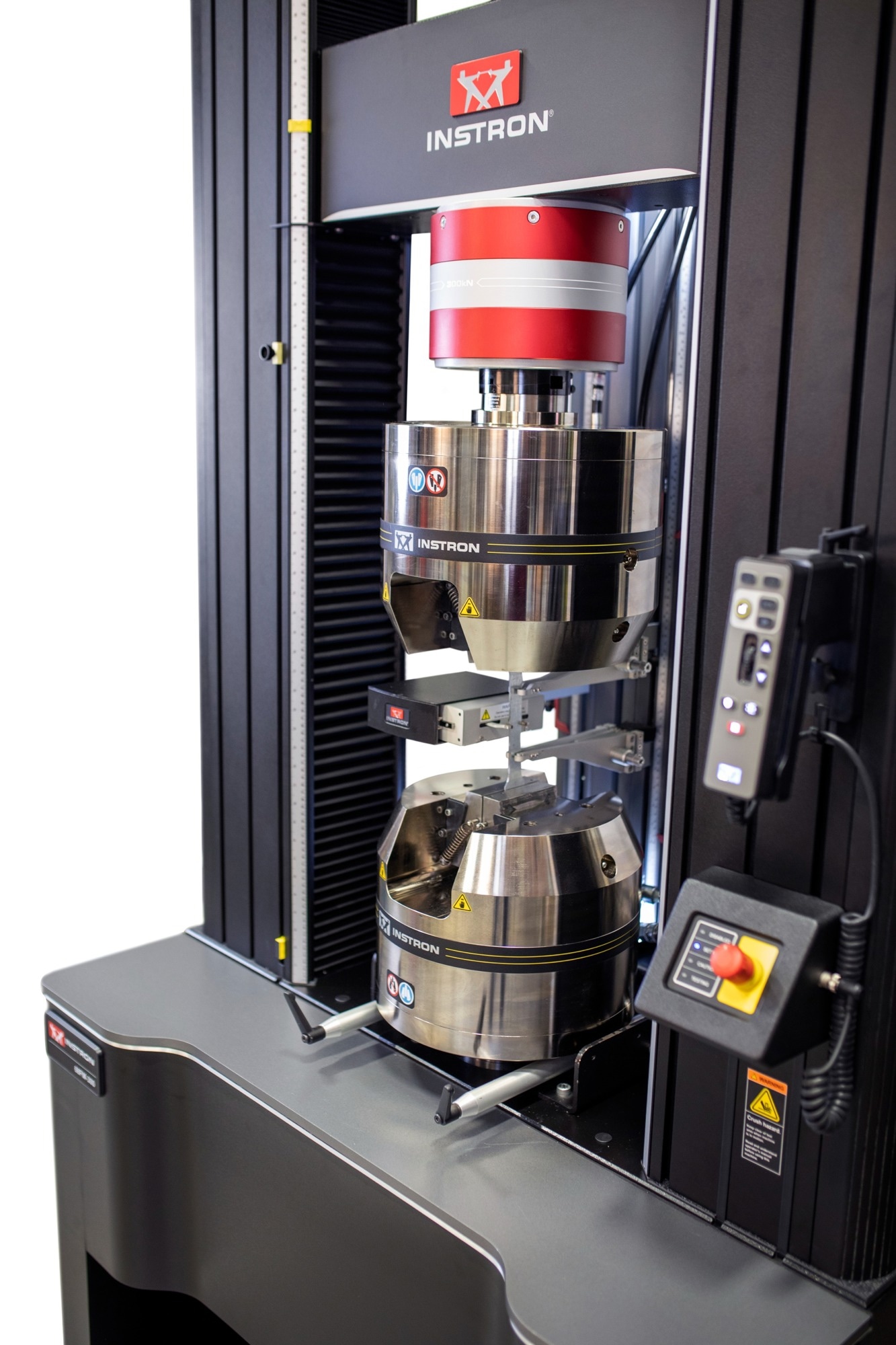In this interview, Sammi Sadler, Senior Applications Engineer at Instron, provides insights into how automation is being introduced for plastics testing and the opportunities this can bring.
How would you define automation in the context of plastics testing, and why is it important?
Automation can be defined as any method that removes the need for a person to perform one or multiple specific tasks. In the context of plastics testing, this can range from something as simple as grips that close automatically to an advanced, fully automated robotic system. One of the biggest challenges when testing plastic is to ensure repeatable and reliable results while also testing at a high throughput. Companies that test plastics are testing hundreds of specimens a week, if not per day, so adding automation is ideal to help achieve extreme precision and repeatability while also increasing efficiency.
What is an automated testing solution?
Automated testing solutions exist on a spectrum. On one end of the spectrum is a fully automated system, like Instron’s AT6 robot-based testing system. On the other end are a variety of simple accessories such as pneumatic/hydraulic grips, automatic extensometers, and automatic specimen-measuring devices. Fully automated systems perform testing entirely independently of human operators, who are only required for periodically loading large batches of specimens. Individual automated components help with common testing challenges but do not eliminate the need for an operator.
What full automation offerings does Instron have?
Instron has two main offerings for fully automated plastic testing systems:
- The AT3 is a small-footprint, linear actuator-based system. The specimen is loaded onto racks and manually placed into the system, which then automatically measures the specimen and loads it into the test frame for a tensile, compression, or flex test. When the test is complete, the specimen is removed and the next one is loaded. The process then repeats until no specimens remain. The full system capacity is generally between 60 and 160 specimens (depending on their dimensions), but a new rack can be added at any time. A single AT3 is capable of performing a variety of test types but in general only one type at a time, and some manual changes might be necessary when switching.
Instron® AT3 | Configured for Tensile Testing
Instron® AT3 | Configured for Tensile Testing. Video Credit: Instron
- The AT6 is a larger-footprint, industrial robot-based solution with a capacity of 300+ specimens. The industrial robot and bigger footprint allow for multiple measurement devices or additional devices like durometers to be added to the system. The AT6 has the capacity to load multiple test frames with a single robot. These frames can share the same configuration or have different load strings — the robot will still automatically load the specimen into the correct frame. This can effectively double the system throughput. The AT6 can also be configured to test multiple test types with minimal to no changes when switching.

Image Credit: Instron
In what ways can automation improve the efficiency of plastics testing processes?
Different types of automation improve testing efficiency in different ways. For example, pneumatic grips increase efficiency in tensile testing because, while a manual grip needs to be screwed closed by hand, a pneumatic grip closes at the click of a button. This reduces the time needed to secure specimens and ensures self-alignment in the load string due to its dual clamping mechanics — which will deliver more repeatable results.
Manual specimen measurement is time-consuming, because the major ASTM and ISO plastics testing standards require three width and thickness measurements per specimen. These averages must then be entered into the software. An automatic measuring device eliminates the need for manual calculations and data entry, streamlining the process for operators.
Plastics testing also typically requires strain measurement. When adding an automatic extensometer — whether it be contacting or non-contacting — once the extensometer is calibrated, the transducer will automatically track the strain of a material without any additional preparation. Instron’s Advanced Video Extensometer (AVE 2) and Automatic Contacting Extensometer (AutoX750) automatically measure the strain as soon as the “play” button is pressed on the handset controller.
Fully automated systems offer important benefits in terms of efficiency. In manual testing, lab employees must load and unload specimens until the batch is complete. This process can last 3 to 5 minutes although each test requires only 30 seconds of operator interaction. So, for a 3.5-minute test of 30 specimens, the process takes 120 minutes, though the operator is only engaged for 15 minutes. This results in a lot of wasted time, particularly when skilled, high-cost labor is required. A fully automated system eliminates this inefficiency, allowing operators to focus on other value-added tasks in the lab.

Image Credit: Instron
In what ways does automation aid in ensuring compliance with industry standards and regulations in plastics testing?
Implementing automated solutions in plastics testing eliminates some or most of the outside influences of human error. Before each test, the automation system will measure specimens in an identical way, using a specimen-measurement device required by the standard, and then automatically input those numbers into the testing software. When testing using Instron’s Bluehill Universal software, pre-built test methods are available for many of the most common ASTM and ISO standards — ensuring that tests will run at the appropriate speeds and calculate the required results.
What are some of the challenges faced when implementing automation in plastics testing, and how can they be overcome?
Plastics cover a wide range of materials from thin films to elastomers and rigid materials. Covering such a wide range of specimens with a single automated testing system is very challenging. If a lab is testing multiple specimen geometries, this may pose some challenges when integrating the holding racks or finding a single gripping solution that works for all the materials. This can be overcome by designing the automated system to be adaptable to different test needs, and this is where it is important that your system be designed by a supplier with experience in both automation and plastics testing. Having a system designed for multiple test types reduces complexity in manufacturing and long-term support. It also makes training for users much easier.
How scalable are automated solutions for different sizes of laboratories or production environments?
Automation is very scalable to the needs of different laboratory sizes. Having multiple automated offerings is key; labs of any size can benefit from simpler automated equipment like grips or extensometers, whereas higher-volume labs can benefit from fully automated systems.
Instron has two main offerings for fully automated systems. The AT3 is designed for mid-sized to large operations by automating a single test frame. Larger labs can utilize the AT6, which can automate multiple test frames with a single robot.
Can you discuss the cost-effectiveness of implementing automation in plastics testing for companies?
In general, fully automated testing has higher up-front costs than manual testing. However, with automated material testing, lab technicians are able to work on more value-added tasks while testing happens in the background. In high-labour rate areas, the ROI on automation can be less than one year. Not only can automation systems run during the day while techs are working on other things, but they can also run at night while no techs are in the building (with the lights off). This allows a lab to add a second and/or third shift of testing with no additional labour costs.
How do Instron’s automated systems integrate with software for data analysis and reporting?
Instron has a variety of options for integrating the test data and analysis software. As part of Instron’s standard software offerings for automated or manual testing, Bluehill Central and TrendTracker can be used for analysis and reporting without the need for additional software.
Instron also has a custom engineering group that can write custom scripts to interface with both custom and off-the-shelf LIMS software. This can be a big value-add for automation customers, as we can interface with existing data management systems.
What advanced features do Instron’s automated plastics testing systems offer that set them apart from competitors?
Instron’s Specimen Protect on the 6800 Series universal testing systems is a unique feature that limits the force applied to a specimen before the test begins. When a tensile grip clamps onto a material, it applies a compressional force that results in negative force on the material. When Specimen Protect is enabled, the crosshead will automatically move to ensure the force on the material is relieved to make sure the specimen isn’t damaged prior to testing.

Image Credit: Instron
With the increase in electric vehicle battery manufacturing and food packaging, thin film production has increased, posing new challenges in proper material handling. Any non-rigid material is inherently harder to manage and, the thinner the material, the more difficult it becomes. Instron’s racks, grippers, and measurement stations are specifically designed to address these challenges. Their automated systems securely hold thin film specimens at two contact points, not releasing until clamped. This ensures consistent positioning and alignment as the specimen moves through the system. Removable racks make loading easy at a workbench, with alignment features to guarantee straight film specimens throughout the process.
Plastic test standards have unique requirements for width and thickness measurements. Instron has a large variety of advanced width/thickness measurement systems that can be automated. These are designed to meet the needs of the specific materials and test standards. We have offerings with a range of accuracy and ability to adjust measurement location and anvil spacing based on the specimen sizes/types being tested.
What do you see as the future trends in automation for plastics testing?
One industry trend is that companies are struggling with increased labour costs and the difficulty of finding skilled staffing. It is difficult to train and retain the skilled staff needed to run a materials testing lab. By adding automation, a lab can operate to a similar or higher testing throughput while keeping staff levels the same. This industry trend has also led to an increased adoption of automation by small to mid-sized labs. It is no longer just the largest, highest-throughput labs that are automating. Many small to mid-sized labs are embracing the benefits and long-term cost savings of automation.
What feedback have you received from customers regarding the use of Instron’s automated plastics testing systems?
We pride ourselves on designing systems that are intuitive and easy to use. One of the most common comments we receive from customers is how quickly their techs are able to learn how to use the equipment. Instron has been designing and building automated test systems for more than 30 years. The reliability and durability of our automated equipment is frequently cited in feedback — many of our systems have been running daily for over a decade. Instron field service engineers are also highly praised for their knowledge of our automated testing systems.
About Sammi Sadler 
Sammi Sadler is a Senior Applications Engineer at Instron with a focus in plastics. This role requires her to stay up to date on all the latest standards and best practices to help customers improve and optimize their static testing setups.

This information has been sourced, reviewed and adapted from materials provided by Instron.
For more information on this source, please visit Instron.
Disclaimer: The views expressed here are those of the interviewee and do not necessarily represent the views of AZoM.com Limited (T/A) AZoNetwork, the owner and operator of this website. This disclaimer forms part of the Terms and Conditions of use of this website.